We know you’ve been dying for Braden’s last installment of his Florida trip, but just to keep you waiting impatiently a bit longer, here is the first of a new series for you: our spring trip to New York—during migration season! Stay tuned for rapid installments, and to make sure you don’t miss a single one, be sure to subscribe by filling out the boxes down and to the right!
All birders have bucket lists and birding New York’s Central Park during spring migration stood close to the top of ours. Just when that would happen, we didn’t know, but this year the end of Braden’s spring semester, ahem, pigeon-tailed perfectly with my daughter’s desire to return to New York City, so we decided to make a family trip of it. We did not plan the exact dates around spring migrants, but first encounters bore promise.

Amy, Tessa, and I arrived Friday, May 6, but Braden wouldn’t pull into Penn Station until the following Monday and I tried to hold off birding until then. I failed. Despite a rainy day Saturday, we wandered back through Bryant Park after an excursion to the New York Public Library, where I got to see a copy of Audubon’s original Birds of America (WOW!). Bryant Park lacked good habitat, but in a few short minutes I glimpsed Gray Catbirds, White-throated Sparrows, and a Hermit Thrush. The message was clear: THE BIRDS ARE HERE! Even more exciting, Tessa and I planned to take Amy to a well-known hotspot, Governor’s Island, for Mother’s Day the next day. Alas, that night Amy came down with a crummy cold, so Tessa and I decided to instead plan a visit to the American Museum of Natural History (AMNH).
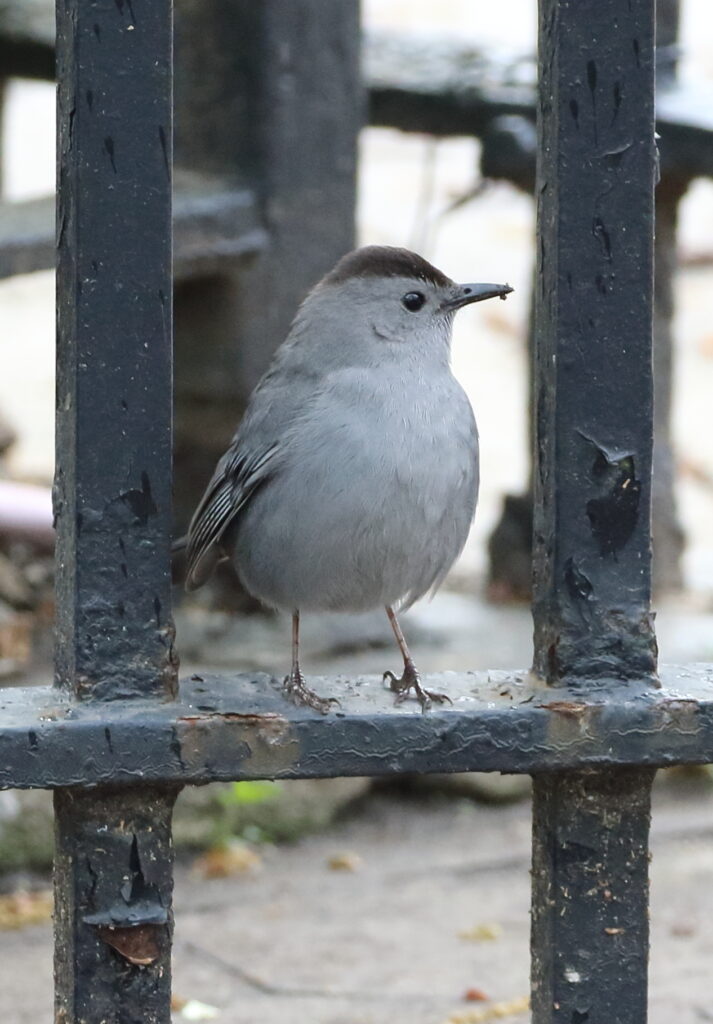
The next morning, as is my wont, I rose way before Tessa so decided to do a bit ‘o bird reconnoitering before we hit the AMNH. Our overpriced, mediocre hotel stood fairly close to the Hudson and I thought There’s gotta be some birds down along the river, right? Uh, not really. Sure, I saw a cormorant, robins, a couple of fish crows (identified by their anemic calls) and the usual city birds—along with a giant aircraft carrier—but was disappointed by the paucity of greenery. On Google Maps, however, I noted a park a few blocks uptown and decided, “What the heck.”
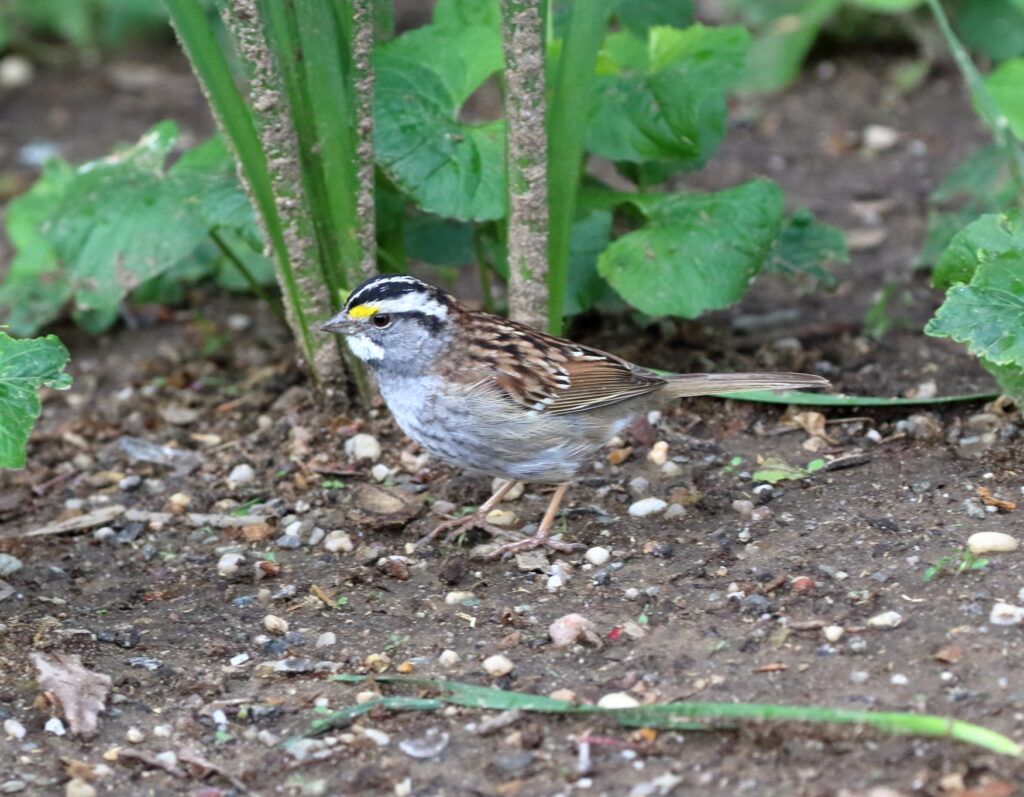
DeWitt Clinton Park would be considered a “postage stamp park” in Montana, but I’m guessing it’s an invaluable resource for its neighborhood New Yorkers, consisting of a doggie park and various courts. More important, even before entering I saw that it held trees and strips of shrubbery, and my pulse quickened with the possibilities. Sure enough, as soon as I walked up the first steps, I spotted a small shape scampering along a tree trunk—one of my favorite birds, Black-and-White Warbler! My Bird Excitement Meter surging, I hunkered down to some serious birding, and was rewarded by more catbirds and White-throated Sparrows, and then saw both Hermit and Swainson’s Thrushes. The biggest surprise? A Common Yellowthroat, very far from water—an obvious migrant passing through!
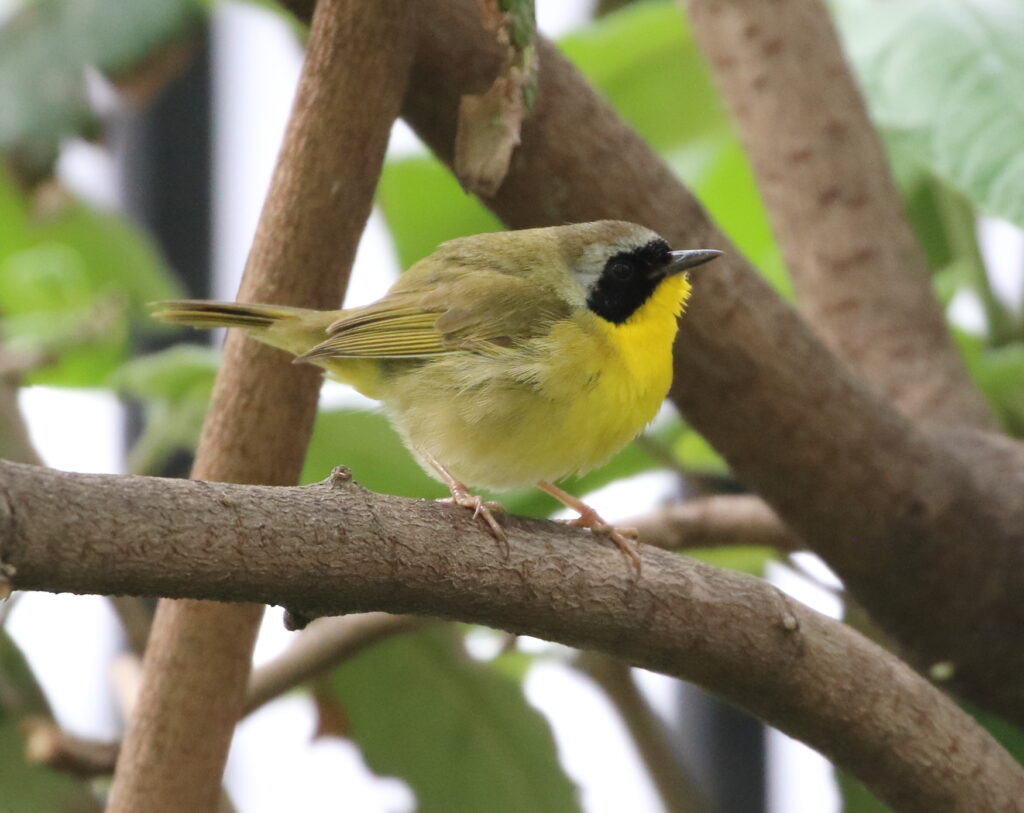
Returning to the hotel, I made sure Amy had what she needed for a day in bed, and then Tessa and I caught the C train up to 81st St. We had ANHM entry reservations for noon and arrived early enough for a quick stroll of Central Park across the street. I kept my expectations low as it was an overcast day and, well, I just didn’t know what spring migration might be like Out East. Within a couple of hundred yards, however, I spotted a small tan bird on the ground with a bold stripe on its crown. “Worm-eating Warbler?” I considered. “No, Ovenbird!” And not just one, but two.
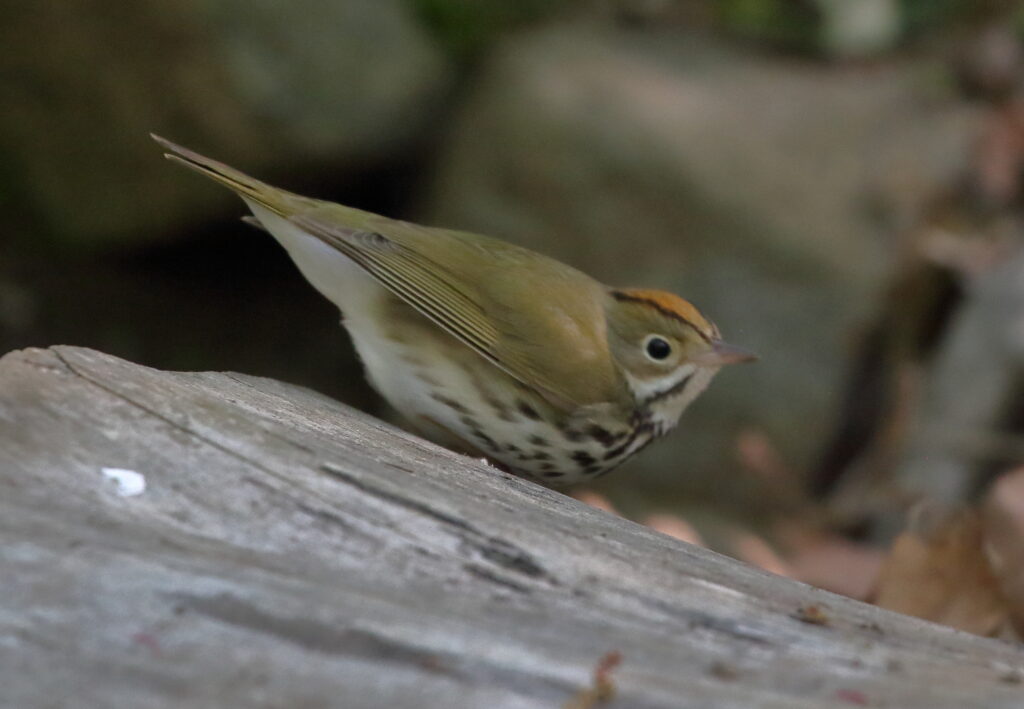
Emboldened, we continued walking, seeing catbirds, a blue jay, more WTSPs, a Red-tailed Hawk, and a surprise Chipping Sparrow. Then, a bold flash of yellow caught my eye. I had worried that I might not be able to ID some of the Eastern warblers, but this was a bright, bold male. Even better, it’s a bird I had for years been staring at on the cover of The Sibley Guide to Birds—Magnolia Warbler! Honestly, the bird was just stunning. I didn’t have my camera, but in a way that was better as I could just focus on enjoying this first male MAWA I had ever seen. Even Tessa, a non-birder, appreciated the warbler’s sublime beauty. With a twenty-minute list of 12 species (not even including Rock Pigeon!), we headed off to the museum, fingers crossed that the birds would still be here when Braden and I would get to bird Central Park in earnest two days later.

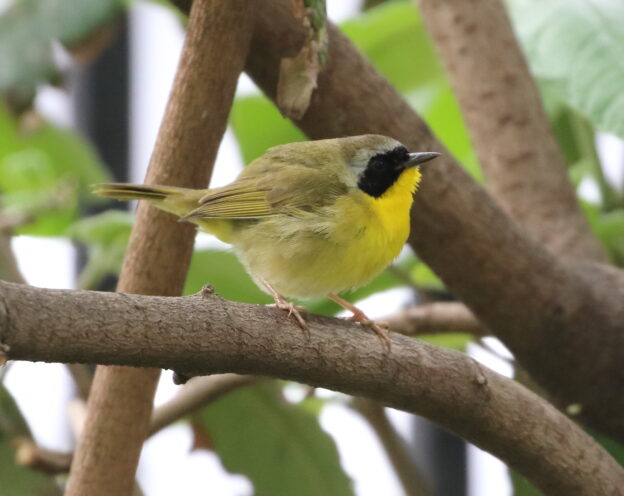
Whoa ….. New York delivered! All small birds. Interesting! Thank you for this fascinating blog! Loved it!
Love, Ma
It’s an obsession. Can’t . . . quit . . . writing!
Some great finds! I’ve been trying to.see a WTSP, rare in central Oregon, without success. Btw, you can’t count any birds that are Yankee fans. It’s in the rules!
Agreed Roger. No Yankees fans of any persuasion allowed. ⚾️ ❤️ Mets
Only the Rock Pigeons are Yankee fans–well, and probably the starlings and House Sparrows. The rest couldn’t care less about beisbol. It’s all World Cup soccer for them!
You’re onto a seismic shift here, one that would be wonderful for (almost) everyone.
Let’s rebrand the Yankees into the New York Rock Pigeons. The slogan? “Rocking Central Park for a hundred years!”
I think you’re onto something, Rich! Will forward to the front office . . .
Congrats on finding happy success with your practice runs! Also, remember, birds or no, those postage stamp parks in the big apple are truly bread and butter for even hardcore NYC residents (so many metaphors!)
Also, be aware that starting at W 72nd heading north there’s quite a long green space that — who knows — might provide some pleasant winged surprises.
Good to know! Honestly, this trip definitely made me want to return and do a thorough scouring of birds all over New York. As BB King says, “Some day, Ba-bee!”